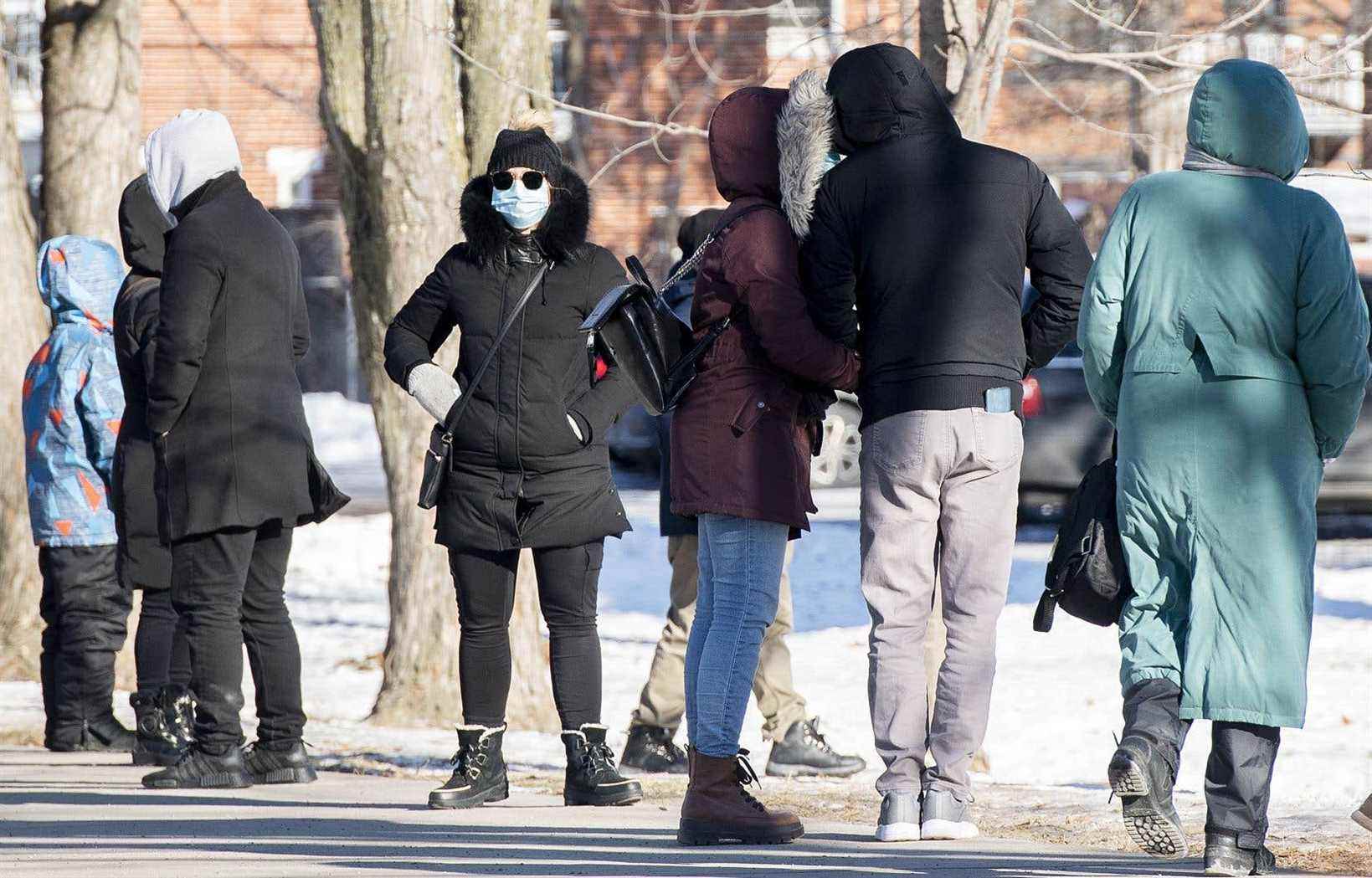The meteoric rise in new infections due to the Omicron variant in recent weeks places Quebec at the epicenter of the crisis in Canada. With its 6,361 cases on Wednesday, the province alone accounted for nearly half of the new infections reported across the country that day.
According to Canadian government data as of Wednesday, the province had a rate of 348 cases per 100,000 population in the past 7 days, more than double that of neighboring Ontario (166) and three times that of Alberta ( 114). Quebec is also far ahead of the country average of 186.
As a result, the province is reporting nearly 400 active cases per 100,000 population as of Dec. 22, the highest rate among the provinces. There are 216 active cases per 100,000 for all of Canada, 191 in Ontario and 189 in Manitoba.
Despite its overwhelming rate of new infections, Quebec is not the only province to break records. On Thursday, there were 5,790 new infections in Ontario, a daily high since the start of the pandemic. The same goes for Quebec, which reported a toll of nearly 9,400 cases, beating the record of 6,043 set the day before.
Nova Scotia also broke their daily record for the 7e consecutive day Wednesday, with 537 new cases. New, stricter restrictions took effect on Wednesday, just before the holidays.
For its part, New Brunswick reported a record 237 new cases of COVID-19 on Wednesday, the highest daily toll since the start of the pandemic. The government followed suit in Quebec by announcing the reduction of capacity in restaurants and personal care centers, as well as the ban on sports competitions.
The number of daily cases also jumped 161% in one week in British Columbia. The 1,528 new cases for Wednesday also mark the province’s highest daily toll to date.
Progression of hospitalizations
Despite daily case reports below those in Quebec and half as many active cases, Ontario has roughly the same number of hospitalized patients today.
The most populous province reported a record of 440 hospitalizations Thursday (up 20 from the previous day), 33 less than in Quebec. More than two-thirds of these hospitalizations involve people who are not fully vaccinated or whose vaccination status was unknown.
Ontario Public Health estimates that 90% of cases as of December 20 would be attributable to the Omicron variant, while it now represents 80% of infections in Quebec, according to the National Institute of Public Health of Quebec (INSPQ) .
The Dr Kieran Moore, Ontario’s chief medical officer of health, said the number of patients who require hospitalization or a stay in intensive care is likely to increase in the coming weeks.
In British Columbia, a report from an independent modeling group indicates hospitalizations from the Omicron-fueled wave could reach unprecedented levels around mid-January.
The rise of Omicron has not, so far, resulted in a wave of deaths. There have been 120 deaths from COVID-19 in Canada for the past 7 days, as of Wednesday. More than half of them were recorded in the two largest Canadian provinces, with 40 deaths in Ontario and 30 in Quebec.
Holiday restrictions
Faced with the rise of Omicron, almost all provinces have reinstated sanitary measures in place to limit its spread on the eve of the holiday season.
Ontario Premier Doug Ford announced the new restrictions on Friday, saying the Omicron variant threatens to overwhelm the healthcare system. Restaurants, gyms and many other indoor venues now have a capacity limit reduced to half. The province has also stepped up its campaign for the booster dose of the COVID-19 vaccine.
Since Wednesday, several new restrictions have also taken effect in British Columbia: nightclubs and bars have had to close, as have gyms and dance studios. Restaurants and cafes must now limit the number of seated customers to six per table.
Prince Edward Island joined Newfoundland and Labrador and announced new isolation requirements for all visitors. Since Wednesday, anyone arriving in the island province must do a quarantine of at least four days, with an obligation to do rapid tests on the second and fourth day. Bars and restaurants must now close at 11 p.m.
Unlike other provinces, Saskatchewan has indicated that it does not intend to tighten its measures immediately, claiming that there is no mass community transmission of the Omicron variant in the province yet. On Wednesday, 105 new cases were identified, the highest toll since the end of November.
